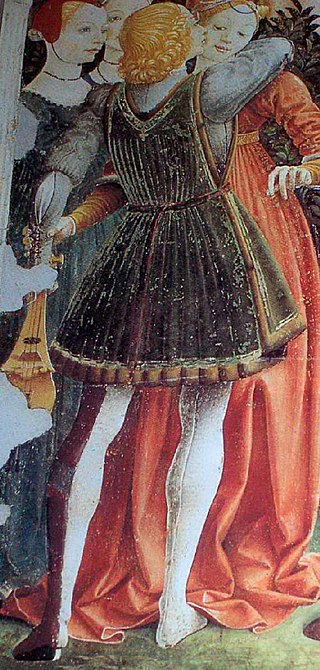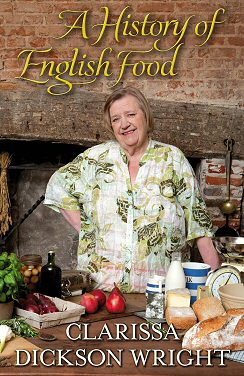
Inns are generally establishments or buildings where travelers can seek lodging, and usually, food and drink. Inns are typically located in the country or along a highway. Before the advent of motorized transportation, they also provided accommodation for horses.

Mary de Bohun was the first wife of Henry Bolingbroke, Earl of Northampton and Hereford and the mother of King Henry V. Mary was never queen, as she died before her husband came to the throne as Henry IV.

Dartington Hall in Dartington, near Totnes, Devon, England, is an historic house and country estate of 1,200 acres (4.9 km2) dating from medieval times. The group of late 14th century buildings are Grade I listed; described in Pevsner's Buildings of England as "one of the most spectacular surviving domestic buildings of late Medieval England", along with Haddon Hall and Wingfield Manor. The medieval buildings are grouped around a huge courtyard; the largest built for a private residence before the 16th Century, and the Great Hall itself is the finest of its date in England. The west range of the courtyard is regarded nationally as one of the most notable examples of a range of medieval lodgings. The medieval buildings were restored from 1926 to 1938.

St Olave's Church, Hart Street, is a Church of England church in the City of London, located on the corner of Hart Street and Seething Lane near Fenchurch Street railway station.

Powis Castle is a medieval castle, fortress and grand country house near Welshpool, in Powys, Wales. The seat of the Herbert family, earls of Powis, the castle is known for its formal gardens and for its interiors, the former having been described as "the most important", and the latter "the most magnificent", in the country. The castle and gardens are under the care of the National Trust. Powis Castle is a Grade I listed building, while its gardens have their own Grade I listing on the Cadw/ICOMOS Register of Parks and Gardens of Special Historic Interest in Wales.

A guide book or travel guide is "a book of information about a place designed for the use of visitors or tourists". It will usually include information about sights, accommodation, restaurants, transportation, and activities. Maps of varying detail and historical and cultural information are often included. Different kinds of guide books exist, focusing on different aspects of travel, from adventure travel to relaxation, or aimed at travelers with different incomes, or focusing on sexual orientation or types of diet.

Hose are any of various styles of men's clothing for the legs and lower body, worn from the Middle Ages through the 17th century, when the style fell out of use in favour of breeches and stockings. The old plural form of "hose" was "hosen". In German these terms remained in use and are the generic terms for trousers today. The French equivalent was chausses.

John Martin Robinson FSA is a British architectural historian and officer of arms.

Julian Dutton is an English comedy writer, and performer. He’s principally known for television and radio, whose work has won a British Comedy Award, a BAFTA, and a Radio Academy Gold Award for Best Comedy. He is the author of six books.
Adam Orleton was an English churchman and royal administrator.

A coach is a large, closed, four-wheeled, passenger-carrying vehicle or carriage usually drawn by two or more horses controlled by a coachman, a postilion, or both. A coach has doors in its sides and a front and a back seat inside. The driver has a raised seat in front of the carriage to allow better vision. It is often called a box, box seat, or coach box. There are many of types of coaches depending on the vehicle's purpose.

A villein is a class of serf tied to the land under the feudal system. As part of the contract with the lord of the manor, they were expected to spend some of their time working on the lord's fields in return for land. Villeins existed under a number of legal restrictions that differentiated them from freemen, and could not leave without his lord's permission. Generally, villeins held their status not by birth but by the land they held, and it was also possible for them to gain manumission from their lords. The villeinage system largely died out in England in 1500, with some forms of villeinage being in use in France until 1789.
Ian James Forrester Mortimer is a British historian and writer of historical fiction. He is best known for his book The Time Traveller's Guide to Medieval England, which became a Sunday Times bestseller in paperback in 2010.

The Hand in Hand Fire & Life Insurance Society was one of the oldest British insurance companies.
Fictional accounts based on the events surrounding Harold Godwinson's brief reign as king of England have been published.

A History of English Food is a 2011 non-fiction book, a history of English cuisine arranged by period from the Middle Ages to the end of the twentieth century, written by the celebrity cook Clarissa Dickson Wright and published in London by Random House. Each period is treated in turn with a chapter. The text combines history, recipes, and anecdotes, and is illustrated with 32 pages of colour plates.

Thomas Dawson was an English author of cookery and housekeeping books.

The Good Huswifes Jewell is an English cookery book by the cookery and housekeeping writer Thomas Dawson, first published in 1585. It includes recipes for medicines as well as food. To the spices found in Medieval English cooking, the book adds herbs, especially parsley and thyme. Sugar is used in many of the dishes, along with ingredients that are uncommon in modern cooking like violets and rosewater.
Bruce Mortimer Stanley Campbell, FBA, MRIA, MAE, FRHistS, FAcSS is a British economic historian. From 1995 to 2014, he was Professor of Medieval Economic History at Queen's University Belfast, where he remains an emeritus professor.

John FitzWalter, 2nd Baron FitzWalter was a prominent Essex landowner best known for his criminal activities, particularly around Colchester. His family was of a noble and ancient lineage, with connections to the powerful de Clare family, who had arrived in England at the time of the Norman Conquest. The FitzWalters held estates across Essex, as well as properties in London and Norfolk. John FitzWalter played a prominent role during the early years of King Edward III's wars in France, and at some point, FitzWalter was married to Eleanor Percy, the daughter of Henry, Lord Percy.















